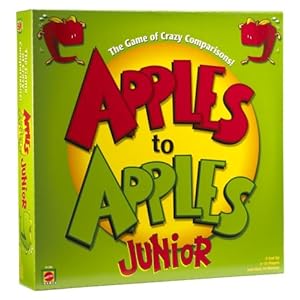My kids have been having a blast learning about adjectives and adverbs! I teach adjectives, not just to learn the parts of speech, but to enhance their writing. Adjectives and adverbs can make a dull sentence interesting! The best writers know how to use descriptive language that captivates their audience, and this is what I want my kids to really get.
Before we dive into adjectives and adverbs, we have a quick review of nouns and verbs since it's important to understand adjectives describe nouns and adverbs describe verbs. One quick way to do this is to have them play these fantastic game on-line.
#1 Use songs to make the parts of speech stick.
I introduce adjectives and adverbs using Schoolhouse Rock: Grammar. I have shared my love for these songs before in my previous posts. These songs seem to get stuck in your head FOREVER. Here is an example.
#2 Create adjective art with a splash of poetry.
We create name art, which uses adjectives. My kids make an acrostic poem with their name and then use adjectives that begin with each letter of their name to describe themselves. Here is an example of one from when I taught school.
#3 Use literature that teach the parts of speech.
Some examples of a book with lots of adverbs and adjectives that we read are:
Suddenly Alligator: Adventures in Adverbs
Some examples of a book with lots of adverbs and adjectives that we read are:
Suddenly Alligator: Adventures in Adverbs
#4 Get your descriptive language popping by making popcorn.
We discuss how to use all our senses to create adjectives and adverbs. We make popcorn and talk about how it:
SOUNDS when we make it and eat it (loud, popping noise, crunchy)
FEELS (squishy, slippery)
LOOKS (small, yellow, white)
TASTES (salty, buttery, sweet, delicious), and
SMELLS (like butter).
Remind kids to use all their senses in their writing.
#5 Dress-up those sentences.
We practice "dressing up" sentences. My kids and I sit in a small circle and we take turns dressing up sentences. I begin by saying a boring sentence, such as:
The boy walked.
My kids take turns "dressing it up" which makes it come alive, such as:
The little boy walked.
The little boy walked across the street.
The little boy walked across the busy street.
The little boy walked quickly across the busy street.
The little boy walked quickly across the busy street holding his mother's hand.
And so on. This activity really shows them the difference details make in sentences.
#6 Practice with fun worksheets.
I am not a huge fan of worksheets but I do believe in independent activities that allow for practicing skills, so we use a few fun printables from education.com. These are not your typical, boring worksheets. They are colorful, fun, and free!
#7 Play a game and learn more adjectives.
We talk about putting some words "to bed" since they may be "tired" of being used all the time. We discuss new words that can be used in place of the tired words (the most common overly used words).
 |
| Source |
 |
| Source |
Something I did differently to adapt for homeschooling was I laminated a bed template and then used a temporary marker to write the words. This way I could erase the words without creating new beds. We studied a new tired word and its synonyms daily for a few weeks.
Here is a different way a teacher taught about tired words. You can make this on a poster instead of a wall for homeschooling.
I like how this teacher used popsicle sticks- very clever!
This teacher was so creative with this fun twist!
 |
| Source |
#9 Use an on-line thesaurus.
#10 Time to review with Mad Libs and FUN computer games.
Create your own Mad Libs at www.itsamadlibsworld.com!
This game is an interactive way to practice identifying the parts of speech.

I'm just warning you ahead of time. The game Grammar Ninja is VERY addicting with its video-game style, so you may end up playing it as must as your kids!
Here is a great site for practicing synonyms and antonyms. It's like playing a game at the fair. My middle child asks to play this game just for fun. Gotta love that!
#11 What's in the Bag Game?
Okay, I know the title says "ten" ways to make adjectives fun but I just played this game with my boys and it was a fantastic way to model and practice using descriptive language. I had to share my excitement with you, so forgive me. :)
I filled three paper bags with five random objects, such as an apple, a hairbrush, a matchbox car, and a pencil. We each took turns reaching into our bags and describing the objects (without looking ourselves) to the others. We all had to guess what the object was before it was pulled out of the bag. This was a lot of fun! I also liked playing the game with them so I could model descriptive words for them, and they would follow my example when it was their turns.
In my 16 years of homeschooling, I've never purchased a grammar or mechanics curriculum or workbook. {Click Here} to read why I avoid using most language arts curriculum. This post is an example of how I teach grammar skills to my kids. I make our lessons hands-on with lots of opportunities to practice the skills they learned. That is my goal in teaching grammar and mechanics- creating strong writers with a passion for writing, not mastering a curriculum.
























